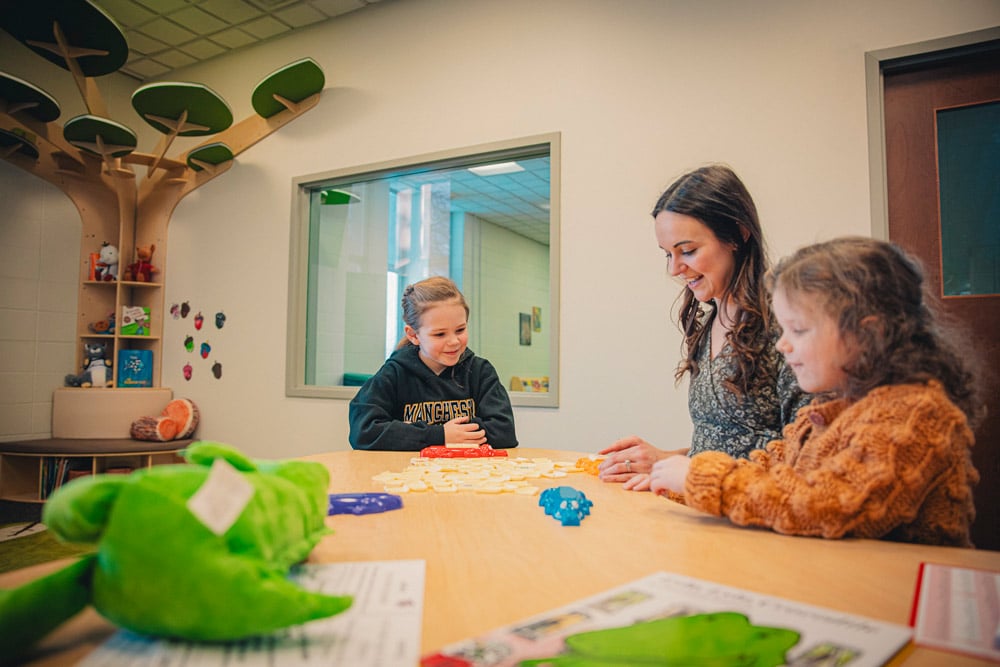The Harry H. Henney ’35 & Jeanette Henney Department of Education
The Harry H. Henney ’35 & Jeanette Henney Department of Education at Manchester prepares students for excellence in the field of teaching.
Students have a variety of majors from which they can choose, including Educational Studies and teaching degrees. Because of the rigorous program, Manchester successfully graduates effective professionals ready for diverse settings working with children and young adults.
The Education Program embraces the University’s liberal arts program, as well as the State of Indiana’s requirements for licensing. Manchester is accredited by CAEP, the Council for the Accreditation of Educator Preparation.

Education Resources
Web Resources
Indiana Department of Education
Licensure Testing
Praxis II Testing
MAE Membership
Handbooks
TEP Handbook 2024-25
Student Teacher Handbook 2024-25
Scholarship Opportunities
Indiana Retired Teacher Association Scholarship
Next Generation Hoosier Educators Scholarship
Science of Reading
The science of reading refers to a body of research from the fields of education, cognitive psychology, developmental psychology, and neuroscience, that explains how individuals learn how to read and best practices for reading instruction. In the Henney Department of Education, our mission is to bridge theory and practice to prepare students for vocations that promote individual well-being, community engagement, peace, and social justice. As a department, we received a initial Lilly Endowment grant of $75,000.00 to aid in further incorporating the science of reading into its curriculum, as well as another Lilly Endowment grant of $500,000.00 as part of Lilly’s Advancing the Science of Reading initiative.
The Henney Department of Education has received A+ ratings by the National Council on Teacher Quality. See the report below:
National Council on Teacher Quality










